This commentary is adapted from the author’s Congressional testimony at the House Foreign Affairs Committee Subcommittee on Asia and the Pacific hearing, “Black Flags over Mindanao,” on July 12, 2017.
Events of the past few months—in particular, the prolonged standoff in Marawi, Mindanao—have significantly increased concerns about terrorist activity in the southern Philippines, and in Southeast Asia more broadly. The shape and focus of the U.S.-Philippine alliance has already been somewhat in flux with the ascension of relatively new leadership in both countries—Rodrigo Duterte having assumed the Philippine presidency in the middle of 2016 and Donald Trump’s inauguration in the United States taking place in early 2017. The evolution of the terrorist threat in the region emphasizes the importance of a productive, cooperative security relationship between the two countries. Accordingly, this commentary outlines six policy recommendations for how the United States should adapt its security cooperation with the Philippines to address the region’s changing security and counterterrorism needs.
The importance of the Philippines and Southeast Asia
The Philippines is important to American national security and foreign policy in Asia. The country is a former U.S. colony with deep historical and cultural ties to the United States, the world’s 12th largest country by population, a lively democracy, and the region’s fastest-growing economy with a robust trade and investment relationship with the United States. Since signing the Mutual Defense Treaty in 1951, the Philippines has been one of the United States’ two treaty allies in Southeast Asia. Regionally, it is one of our most important security partners in the Asia-Pacific, as the U.S. has sought to expand cooperation throughout the region, including with Singapore, Malaysia, Indonesia, and Vietnam.
There are two attributes of the U.S.-Philippine security relationship that distinguish it from most American security partnerships in East Asia. First, the Philippines has a complicated security environment, encompassing significant internal challenges. The country is a 7,000-island archipelago, much of it low-lying and especially vulnerable to natural disasters such as typhoons. This places significant demand on the Armed Forces of the Philippines (AFP) to conduct humanitarian assistance and disaster relief (HA/DR) operations. Throughout the Philippines’ history, it has also dealt with domestic challenges related to crime, militancy, piracy, and terrorism—including the world’s longest-running communist insurgency by the New People’s Army (NPA) as well as a decades-long Muslim separatist movement in Mindanao, the southernmost large island in the country with the world’s third-largest Catholic population. The high salience of internal security challenges is relatively unusual among the United States’ treaty allies and partners in Asia.
As a result, the Philippines has long placed a heavy emphasis on internal security issues and capabilities. During the Cold War, the United States guaranteed the Philippines’ external security via the Mutual Defense Treaty, projecting power in Asia from the Clark Air Base and Subic Bay Naval Station; the AFP focused primarily on internal security. Under the previous president, Benigno Aquino III, the Philippines had begun to shift its focus toward external defense, embarking on a defense modernization program that, among other things, started the process of moving the land-heavy AFP toward more air and maritime capabilities. Aquino also pursued international arbitration to challenge Chinese actions in the South China Sea and increased cooperation with the United States and other regional security partners, such as Japan and Australia, in pursuit of those capabilities. Since assuming the presidency, Duterte has, to varying degrees, pulled back (or threatened to do so) from all of these initiatives—questioning the value of the U.S. alliance and the more recent Enhanced Defense Cooperation Agreement (EDCA), courting Chinese investment and infrastructure assistance, and declining to press Beijing on its actions in the South China Sea after the arbitration court ruled primarily in Manila’s favor in 2016. Duterte’s focus on internal security, therefore, is a return to the more inward focus that the AFP and Philippine government have traditionally held since 1945. I will return to that issue in the section below.
Second, the U.S.-Philippine alliance generally functions best when it does so with full awareness of the domestic political dynamics in the Philippines. The Philippines is, by any survey you look at, consistently one of the most pro-American places on earth. There are strong people-to-people ties and broad and stable goodwill toward the United States among the public. Recent and repeated comments by President Rodrigo Duterte about the United States—often using colorful and inflammatory language—have, in the minds of many in Washington, complicated the ability of the United States to formulate and implement effective security cooperation with the Philippines. The difficulty, however, should not be overstated or presented as an issue that is solely to do with Duterte. His statements echo—albeit using very different language—a long tradition of concern on the part of the Philippine left regarding potential U.S. encroachment on Philippine sovereignty, and vacillation on just how closely Manila should tie itself to Washington. That same nationalistic sentiment contributed to the withdrawal of U.S. forces from Philippine bases in the early 1990s (along with the volcanic eruption at Mt. Pinatubo), and that propelled activists to successfully advocate for the Philippine constitution to explicitly forbid permanent foreign military bases, meaning that American forces rotate through under a Visiting Forces Agreement signed in 1999. The 2014 Enhanced Defense Cooperation Agreement expanded the number of facilities available to that rotational presence, including Lumbia Airfield in Cayagan de Oro in Mindanao. These domestic political dynamics are important to navigate carefully—but they do not make the alliance unmanageable.
Recent changes in the Philippines’ security environment
During the past two decades, American security cooperation with the Philippines has focused primarily on counterterrorism or maritime security. From 2002 to 2015, the United States deployed several hundred special operations personnel to the southern Philippines for counterterrorism purposes. The primary focal point of that cooperation, the Joint Special Operations Task Force-Philippines (JSOTFP), was discontinued in early 2015 after U.S. involvement in a controversial operation, though the United States has, at the request of the Philippine government and military, provided intelligence, surveillance, reconnaissance, and other technical assistance during the recent operations in Marawi.
As tensions have risen in the South China Sea, much of U.S. security cooperation in recent years has focused on maritime security, in keeping with the growing emphasis of the AFP on these missions. As part of this, the U.S. has refocused or added programs aimed at building the Philippines’ naval and coast guard capabilities, as well as strengthening the country’s maritime domain awareness. The United States has also regularly sent ships and personnel to the region for humanitarian missions, such as its assistance after Typhoon Yolanda struck the Philippines in November 2013, and the U.S. military’s ongoing participation in Operation Pacific Angel to deliver humanitarian assistance and training.
Over the course of the past year or so, however, concerns about terrorist activity in Mindanao have increased. These concerns have focused on “black flag” militant groups based in the southern Philippines, which have sworn loyalty to the Islamic State (ISIS) and received recognition from ISIS, and on the threat posed by ISIS-affiliated fighters returning to the region from fighting in the Middle East. In late November 2016, one of these ISIS-linked groups, the Maute group, occupied Butig in Lanao del Sur for five days. Fighting has been prolonged in Marawi, where ISIS-aligned fighters—principally from the Maute group, Abu Sayyaf, and the Bangsamoro Islamic Freedom Fighters—have coordinated to hold parts of the city in an urban siege that has now lasted over two months. At the time of writing, Mindanao has been under martial law for 60 days and the Philippine legislature has granted approval for it to remain so until the end of 2017. Almost 600 people have been killed in the fighting, around a quarter-million civilians have been displaced, and significant parts of the city have been destroyed. The Maute group was suspected of placing a bomb near the U.S. embassy in Manila last November and of bombing President Duterte’s hometown of Davao. The appearance of foreign fighters in Marawi—not just Malaysians and Indonesians, but reportedly also Saudi, Yemeni, and Chechen fighters—raises the possibility that Mindanao will become a central attraction for jihadists unable to travel to the Middle East or attracted to the operational, physical foothold being established in Mindanao. The collapse of a 2014 peace agreement between the government and the Moro Islamic Liberation Front (MILF) has exacerbated this territorial and political challenge, as militants disillusioned with the peace process turn to more radical ISIS-linked organizations instead.
At the same time, concerns about kidnapping-for-ransom operations by the terrorist group Abu Sayyaf in the waters around the southern Philippines have also heightened. Western hostages have been executed when ransom demands were not met, while payments made for other hostages raise concern that these operations help bankroll ISIS-linked militants. The Philippine press reported last fall that Abu Sayyaf, which has pledged allegiance to ISIS, had raised at least $7 million in 2016 from its kidnapping operations. As a result of concerns about security in these waters and the safety of trade between the two countries, Indonesia temporarily suspended shipping and banned coal exports to the Philippines (70 percent of the country’s supply). These kidnapping-for-ransom operations, therefore, are not only a maritime security and law enforcement issue, but a matter for counterterrorism and trade throughout the region.
In short, the emergence of links between militant groups in Mindanao, including a resurgent Abu Sayyaf, and the Islamic State, especially in the context of the collapse of the 2014 peace agreement, led to a significant increase in the counterterrorism threat in the southern Philippines, and pose risks to the trade that passes through the Sulu Sea.
Recommendations for successful security cooperation
The United States has compelling security interests in active security engagement with the Philippines and its neighbors in Southeast Asia. There are six major ways that existing security cooperation can be adapted to address the evolving terrorist threat.
First, active engagement by both the executive branch and by Congress to signal a U.S. presence, participation in, and commitment to the Philippines can have a real positive impact. Concern about Duterte is understandable, but the Philippines remains strongly pro-American and cognizant of the benefits of a robust security relationship. At present, that engagement can most productively be focused on the bureaucracy, military, legislature, local governments, civil society, and things like continued humanitarian missions that affirm the shared values underpinning the alliance. Broader engagement with ASEAN, including but not limited to a Congressional delegation to the region (including the Philippines), would indicate strong, bipartisan support for the efforts that administration officials have made thus far to signal the importance of the region and outline a vision of the U.S. role in a peaceful, prosperous, and free Asia.
Second, the United States could consider expanding maritime security assistance and continue its efforts to strengthen Philippine maritime domain awareness. Executed well, this has potential to simultaneously improve the Philippine government and military’s ability to address multiple priorities: conducting HA/DR operations, improving law enforcement and counterterrorism capabilities, and boosting external defense. It is important that, even as the Philippines deals with intensifying internal security and terrorist threats, it does not abandon efforts to strengthen its maritime capacities and defenses in the South China Sea. The Philippines received a significant portion of the Maritime Security Initiative’s 2016 funding, and given the exigency of current security needs, it makes sense for that trend to continue. Maritime capacity-building has the additional advantage of focusing on cooperation that doesn’t raise human rights concerns under the Leahy Amendment, and will allow the United States to contribute where security interests overlap, while still voicing strong support for democratic values such as human rights. This will help strike the right balance between recognizing the popular support that Duterte has had thus far, and strongly affirming the shared values upon which today’s alliance is based.
Third, if the Philippines requests it, the United States should be willing to examine options for re-activating formal counterterrorism cooperation with Manila, such as the previous Joint Special Operations Task Force-Philippines. With the U.S. military already providing technical assistance to the AFP, clearly defining the parameters of American forces’ involvement—insofar as possible given security considerations, of course—and proactively affirming that this presence will be consistent with the Philippine constitution may help avoid domestic sensitivities. It is not necessary or desirable for U.S. counterterrorism assistance to become a political football in Philippine domestic politics. Careful communication will help keep the focus on the important shared interest that our two countries have: preventing ISIS from establishing a physical foothold inside the territory of a U.S. treaty ally in Asia.
Fourth, the United States can support Manila’s efforts to cooperate with other U.S. security partners, including Japan, South Korea, Australia, Indonesia, and Malaysia. The launch of trilateral patrols and information-sharing among Indonesia, Malaysia, and the Philippines in June were an important step to boost regional cooperation on counterterrorism and counter-piracy. Strengthening the Philippines’ naval, coast guard, and maritime law enforcement capability as described above is important to giving this cooperation teeth; partners like Japan, Australia, and South Korea can play an important role, heightening the impact of American assistance.
Fifth, the United States can identify productive forms of economic engagement with the Philippines and Southeast Asia. This includes not just focused trade agreements on travel goods, but efforts to strengthen regional financial tools for combatting terrorism. Like maritime capacity-building measures, these efforts can achieve multiple priorities—such as strengthening the regional financial architecture to counteract North Korea’s money laundering and revenue-generating activities in the region. It will be especially important to proactively limit the flow of funds from ISIS agents in the Middle East into Southeast Asia to limit the growth and operational capabilities of ISIS-affiliated groups. Boosting economic cooperation will also help the Philippines to navigate a dilemma increasingly faced by Washington’s East Asian allies: reliance on the United States for security, but China for economic prosperity.
Sixth, Washington must be thoughtful about, and should monitor closely, the political context in which ISIS-linked terrorism might unnecessarily be able to gain greater traction. There is little question that the collapse of the 2014 peace agreement between the government and the MILF, and the resultant failure to create the Bangsamoro region in Mindanao, have contributed to the splintering of individuals and factions away from the MILF and toward more radical groups. Despite Duterte’s stated support for the Bangsamoro region, it remains to be seen exactly how he—and the majority Catholic legislature—will approach this question, and what success Duterte’s efforts might have in bringing an end to the decades-long conflict in Mindanao. Regionally, the treatment of the Rohingya Muslim population in Myanmar is a grievance that could be a recruitment tool and rallying cry for Islamic militants across Southeast Asia. The Unites States should therefore closely monitor the progress of these issues, and express support for the development of effective, inclusive, long-term solutions to two of the region’s longest-standing points of tension.
Conclusion
The resurgence of terrorist threats in the southern Philippines, and especially the activities of groups with new links to ISIS, has raised new questions about the shape and focus of U.S. security cooperation with the Philippines. In crafting that cooperation, it is helpful for American policymakers to be aware of both the delicate balance between the internal and external security needs that Manila has long had to strike, and the domestic sensitivities that can trip up robust security cooperation. With these factors in mind, there are many areas in which the United States can adjust and strengthen its security cooperation with the Philippines, and can work together with Manila to prevent ISIS from developing a territorial foothold on the soil of a U.S. ally in Asia.
The Brookings Institution is committed to quality, independence, and impact.
We are supported by a diverse array of funders. In line with our values and policies, each Brookings publication represents the sole views of its author(s).
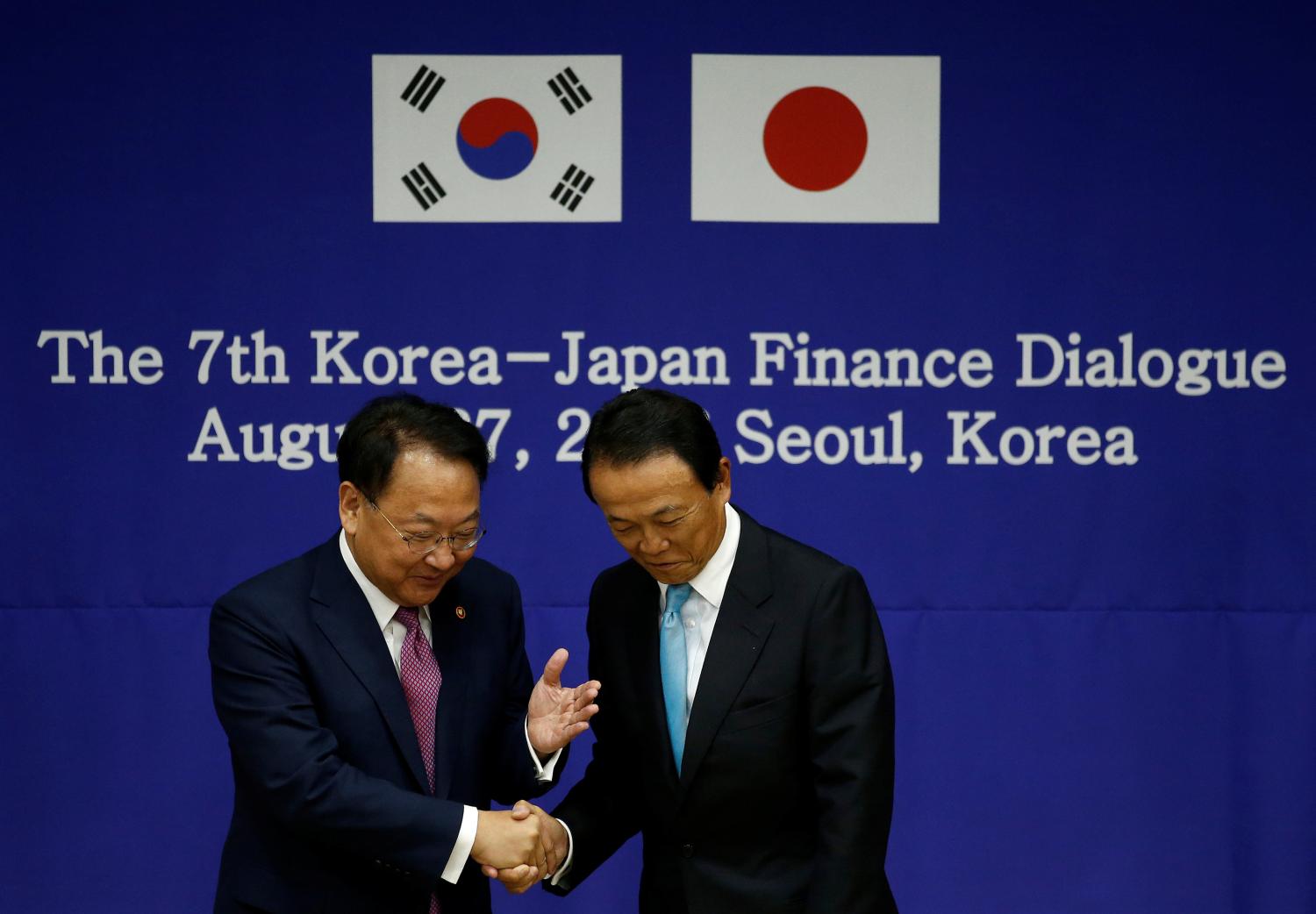
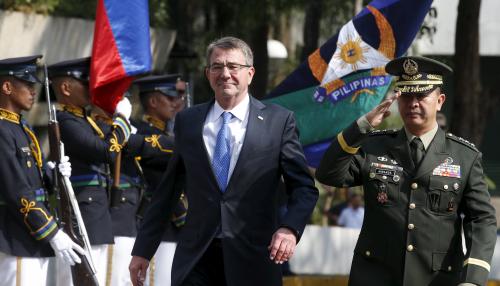
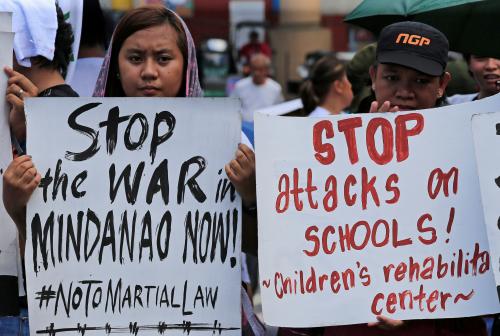

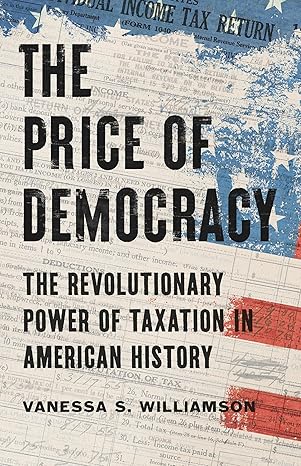

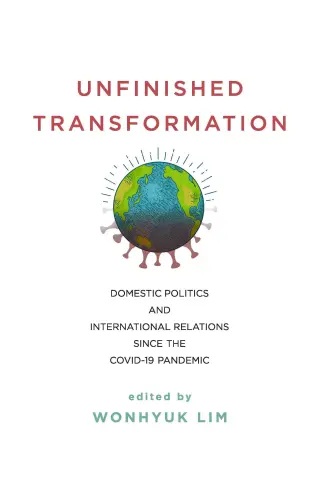




Commentary
Op-edTerrorism in the Philippines and U.S.-Philippine security cooperation
August 15, 2017